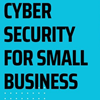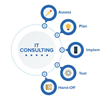Network and data security are crucial aspects of IT support, focusing on protecting an organization's IT infrastructure and sensitive data from various threats, such as cyberattacks, data breaches, and unauthorized access. Here's a comprehensive breakdown of key elements involved in network and data security IT support:
1. Network Security Network security involves safeguarding the underlying network infrastructure from unauthorized access, misuse, or malicious attacks.
- Firewall Management: Implementing and configuring firewalls to monitor and control incoming and outgoing network traffic. Firewalls create a barrier between trusted internal networks and untrusted external networks (like the internet).
- Intrusion Detection and Prevention Systems (IDPS): Monitoring network traffic for suspicious activity. An IDPS detects unauthorized access and can take automated actions to prevent it.
- Virtual Private Networks (VPN): Establishing VPNs to ensure secure communication over public networks. VPNs encrypt data traffic between remote users and the corporate network.
- Network Access Control (NAC): Restricting access to the network for unauthorized devices. This system ensures that only approved devices and users can connect.
- Segmentation: Dividing a network into segments to limit lateral movement in case of a breach. This reduces the impact of a compromised device on other parts of the network.
2. Data Security Data security focuses on protecting sensitive and confidential information from unauthorized access, corruption, or theft.
- Encryption: Implementing encryption to protect data both at rest (stored) and in transit (moving through the network). This ensures that even if data is intercepted or stolen, it cannot be read without the decryption key.
- Data Loss Prevention (DLP): Using DLP tools to detect and prevent unauthorized attempts to move or access sensitive data. These tools monitor for potential breaches and prevent sensitive information from leaving the organization.
- Backup and Disaster Recovery: Ensuring regular data backups and having a disaster recovery plan in place. This ensures that data can be restored in case of accidental deletion, hardware failure, or a cyberattack like ransomware.
- Access Controls: Implementing strict access control measures, such as role-based access control (RBAC), which grants access to data based on a user's role within the organization.
3. User and Endpoint Security Endpoints (e.g., computers, mobile devices, and IoT devices) and user actions are frequent attack vectors.
- Antivirus and Antimalware Solutions: Deploying and regularly updating antivirus and antimalware software to protect endpoints from malicious software.
- Endpoint Detection and Response (EDR): Implementing EDR solutions to monitor, detect, and respond to suspicious activities on endpoint devices.
- Multi-Factor Authentication (MFA): Strengthening user authentication mechanisms by requiring more than just a password for access (e.g., a second factor like a mobile device or token).
- Security Awareness Training: Conducting regular security training for employees to raise awareness about phishing, social engineering, and other cybersecurity threats.
4. Monitoring and Incident Response Real-time monitoring and a defined incident response plan are essential for dealing with security incidents effectively.
- Security Information and Event Management (SIEM): Centralizing the logging and monitoring of security-related events to detect unusual or malicious activities. SIEM systems analyze logs and generate alerts based on predefined rules.
- Incident Response Plan: Developing and implementing a comprehensive incident response plan. The plan should outline procedures for detecting, responding to, and recovering from security incidents, such as data breaches or network attacks.
- Patch Management: Regularly applying patches and updates to fix security vulnerabilities in software, operating systems, and applications.
5. Compliance and Auditing Many industries are governed by strict data security regulations, and compliance is a critical part of IT security.
- Regulatory Compliance: Ensuring adherence to industry-specific regulations such as GDPR (General Data Protection Regulation), HIPAA (Health Insurance Portability and Accountability Act), PCI-DSS (Payment Card Industry Data Security Standard), and others. These regulations often have stringent security and privacy requirements.
- Auditing and Reporting: Regularly auditing security controls and processes to identify potential weaknesses. Maintaining logs and generating reports for compliance purposes.
6. Cloud Security With the growing use of cloud services, cloud security is now a major component of network and data security.
- Secure Cloud Configurations: Ensuring cloud services are configured securely, including proper identity management, access controls, and encryption. Misconfigurations can lead to security vulnerabilities.
- Cloud Access Security Brokers (CASB): Using CASB solutions to enforce security policies across cloud platforms and provide visibility into cloud service usage.
- Monitoring for Data Leakage: Implementing security measures to monitor for potential data leaks from cloud services, including storage misconfigurations and unsecured APIs.
By implementing these practices, IT support can enhance network and data security, protecting critical systems and sensitive information from evolving threats.






